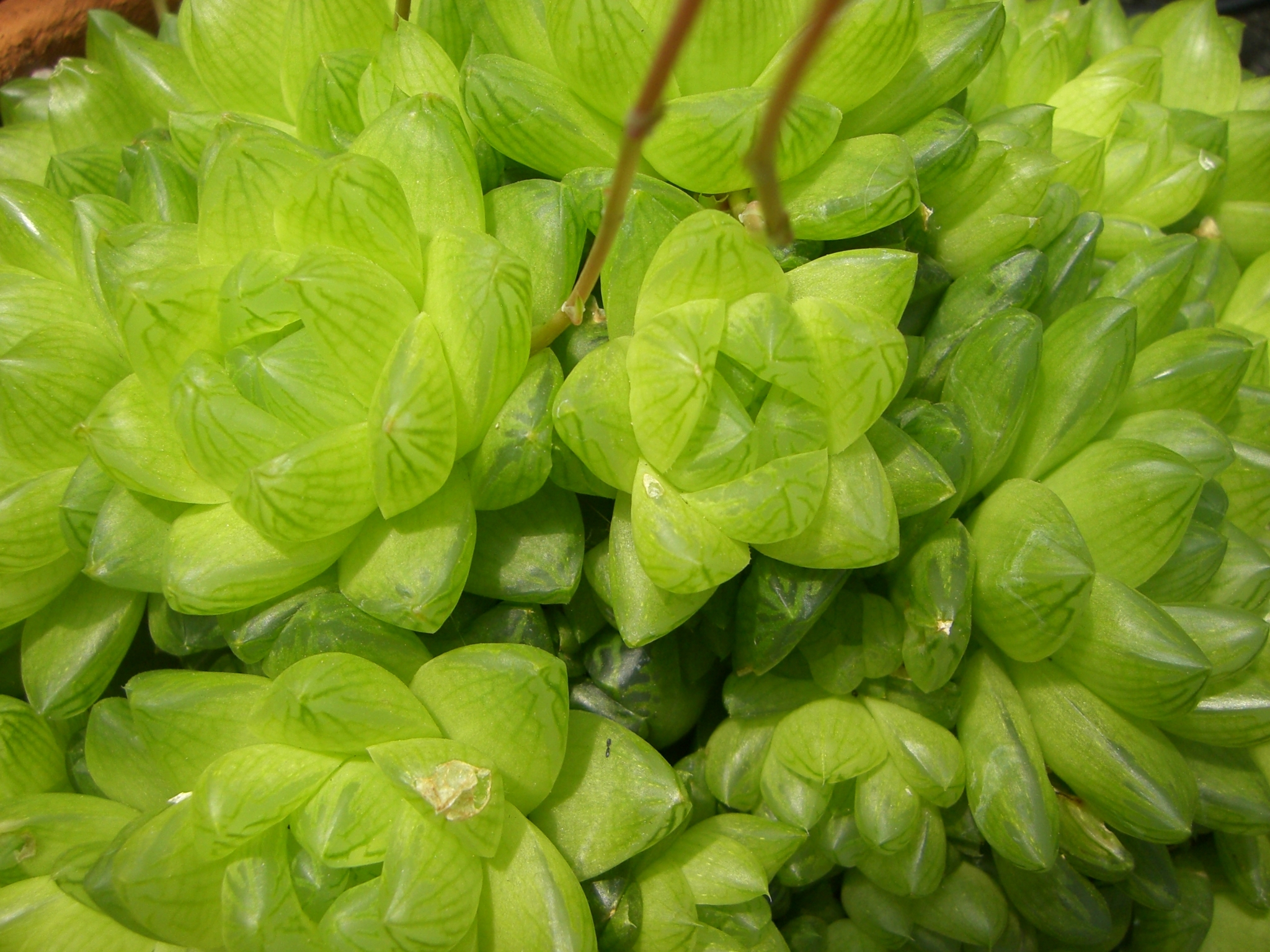
Commemorating Adrian Hardy Haworth (1768–1833), an English botanist specialising in succulent plants.
Plants. Herbs, with fleshy, fibrous roots. Leaves arranged in rosettes, the surfaces tuberculate or smooth; margins entire. Inflorescences thin and wiry, branched or simple; racemes long-cylindrical. Flowers 2-lipped, anthers maturing before the ovary, without pronounced basal bulge, greenish-white (rarely pale pink). Stamens included when pollen is shed.
The delimitation of species in Haworthia is difficult and several systems of classification are available.
The species are variable with many distinct local forms and as well readily cross-pollinate in cultivation leading to numerous hybrids. This genus is very popular with collectors of succulent plants and while only 4 species could be considered common in general cultivation, nearly all of the known species (represented by numerous forms) are in Australian cultivation.
Plants are best grown as pot-plants and are very suitable for dish-gardens. Protection from frost and strong sun is recommended, although the plants will tolerate low temperatures if dry and require plenty of indirect light for good growth.
About 70 species in S Africa.
Seeds, offsets, leaf cuttings in some species.
The thin, wiry inflorescence and the 2 lipped flowers.
Bayer (1982), Pilbeam (1983), Scott (1985), Bayer et al. (1998).
Source: (2005). Haworthia. In: . Horticultural Flora of South-eastern Australia. Volume 5. Flowering plants. Monocotyledons. The identification of garden and cultivated plants. University of New South Wales Press.
